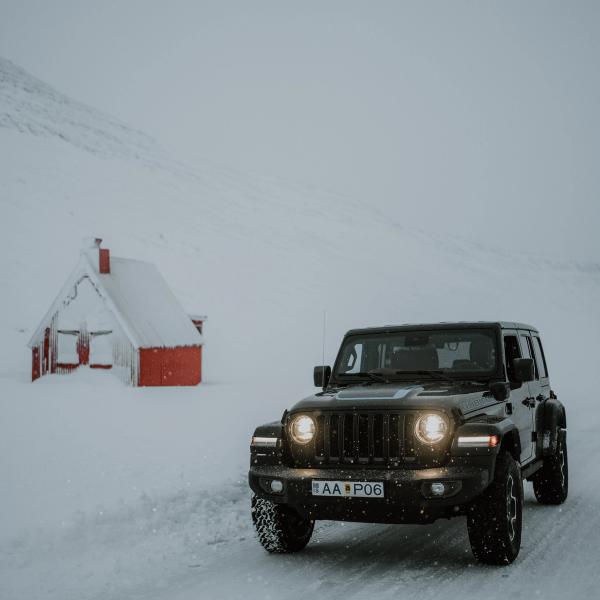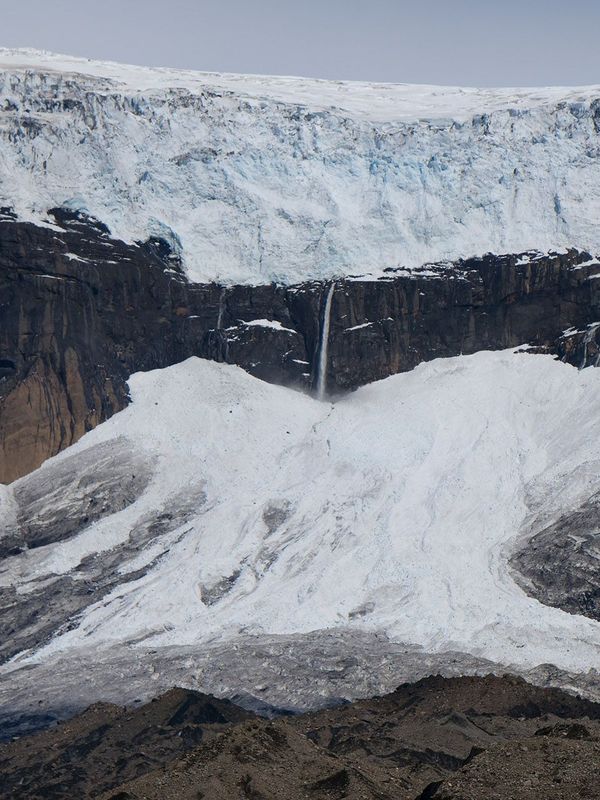
Discovering Morsárfoss: Iceland's Tallest Waterfall
Iceland is a treasure trove of natural wonders, and Morsárfoss is one that you simply can't miss. This article will guide you through why Morsárfoss is worth a visit, fascinating facts about the waterfall, how to get there, what to wear, and what else to explore in the area.
Key Takeaways
- Morsárfoss is the tallest waterfall in Iceland, standing at 228 meters.
- It's located in Vatnajökull National Park.
- There are many things to do and see near Morsáfoss, such as Svartifoss Waterfall, Jökulsárlón Glacier Lagoon, and the Eldgjá Canyon.
Why is Morsárfoss Worth a Visit?
Morsárfoss is Iceland's tallest waterfall, standing tall at an impressive 228 meters (748 feet). Located in Vatnajökull National Park, it offers a breathtaking view as the water plunges down from the Morsárjökull glacier.
The Skaftafell area is a paradise for nature lovers, with its diverse landscapes that include glaciers, mountains, and lush valleys.
The hike to reach a good vantage point is challenging but incredibly rewarding, offering adventurers a chance to experience Iceland's raw and untouched beauty.
Facts & Features About Morsárfoss
Discovering Morsárfoss feels like stumbling upon one of Iceland’s hidden treasures. With its impressive height, intriguing formation, stunning appearance, and adventurous access, Morsárfoss perfectly showcases the raw beauty and incredible power of nature.
Height
At 228 meters, Morsárfoss is Iceland's tallest waterfall. This makes it a significant natural landmark and a must-see for waterfall enthusiasts.
Morsárfoss was only officially recognized as Iceland's tallest waterfall in 2011, following the melting of the Morsárjökull glacier, which gradually revealed the full height of the falls. Prior to this, the title of the tallest waterfall was held by Glymur, which stands at 198 meters.
Formation
Morsárfoss was formed from the melting ice of the Morsárjökull glacier, an outlet glacier of the larger Vatnajökull ice cap. This glacier-fed waterfall is a testament to the power of nature and the ever-changing Icelandic landscape.
Appearance
The waterfall features a single major drop, surrounded by multiple smaller cascades. The glacial ice frames this stunning sight, creating a mesmerizing view.
Accessibility
One of the unique aspects of Morsárfoss is its remote location. The hike to a good vantage point is about 12 km round trip, making it accessible to those who are up for a moderate challenge. The best vantage points are from the Kristínartindar peaks, which are approximately 6 km away, making binoculars or a zoom lens necessary for a good view. The journey through Vatnajökull National Park to reach Morsárfoss is filled with spectacular scenery, making the entire trip an adventure in itself.
Where is Morsárfoss and How to Get There
Morsárfoss is located in Vatnajökull National Park in southeast Iceland, near the Skaftafell area. It's approximately a four-hour drive from Reykjavik along the scenic Route 1.
Driving Directions:
From Reykjavik
- Start: Head east on Route 1 (Ring Road) from Reykjavik.
- Scenic Drive: This drive takes you through some of Iceland's most iconic landscapes, including black sand beaches and lava fields.
- Distance: The total distance is approximately 327 kilometers (203 miles).
- Turnoff: Follow the signs to Skaftafell, where you’ll find the Skaftafell Visitor Center.
From Vík
- Start: Drive east on Route 1 from Vík.
- Distance: About 140 kilometers (87 miles).
- Landmarks: Along the way, you’ll pass landmarks like Reynisfjara black sand beach, Dyrhólaey, and the town of Kirkjubæjarklaustur.
- Turnoff: Follow the signs to Skaftafell and park at the Skaftafell Visitor Center.
From Höfn
- Start: Drive west on Route 1 from Höfn.
- Distance: Approximately 136 kilometers (85 miles).
- Landmarks: You’ll pass the stunning Jökulsárlón and Fjallsárlón glacier lagoons.
- Turnoff: Follow the signs to Skaftafell and park at the Skaftafell Visitor Center.
Once at the Skaftafell Visitor Center, the hike to Morsárfoss begins. Follow the marked trail towards the Kristínartindar peaks for the best vantage point of the waterfall. This hike is roughly 6 km each way and requires good physical fitness and proper gear.
What to Wear When Visiting Morsárfoss
Icelandic weather can be unpredictable, and the terrain around Morsárfoss can be challenging. Here’s what you should wear:
- Sturdy Hiking Boots: Essential for navigating the rough terrain.
- Waterproof and Windproof Clothing: Protects against the elements.
- Layers: Allows you to adjust to changing temperatures.
- Crampons, Ice Axes, and a Safety Harness: If you’re planning to hike close to the glacier, these are necessary. It’s advisable to be accompanied by a local guide for safety.
Surrounding Sites & Things to Do Near Morsárfoss
The region around Morsárfoss is rich with natural attractions and exciting activities.
Skaftafell Area
- Svartifoss Waterfall: This waterfall is famous for its stunning basalt columns that look like organ pipes. The hike to Svartifoss is relatively easy and offers beautiful views and unique geological formations, making it a favorite among photographers and nature lovers.
- Glacier Hiking: If you're up for some adventure, join a guided glacier tour on Skaftafellsjökull or Svínafellsjökull. These tours are led by experts who provide all the necessary gear and fascinating insights into the glaciers. Walking on the ice and exploring crevasses is an unforgettable experience.
- Scenic Views: For breathtaking panoramic views, hike up to the Kristínartindar peaks. The trek is challenging, but the reward is an unparalleled view of the surrounding glaciers and landscapes, perfect for those memorable photographs.
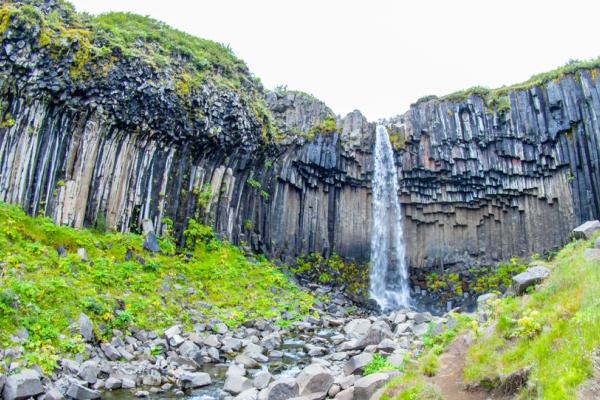
Jökulsárlón Glacier Lagoon
Just about 50 km east of Skaftafell, Jökulsárlón is a magical place where you can see icebergs floating in a serene lagoon. Boat tours take you up close to these ice giants, and nearby Diamond Beach is a must-visit, where ice chunks scattered on the black sand create a striking visual contrast.
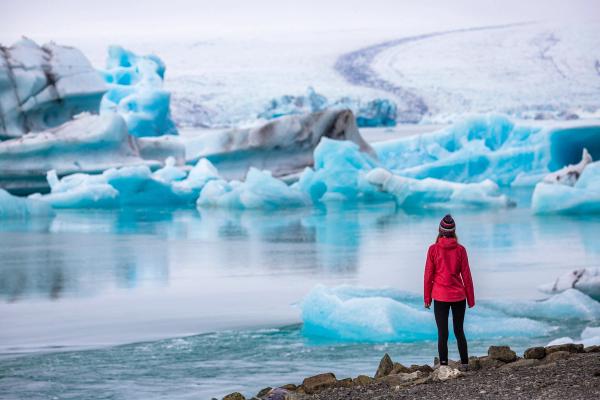
Svínafellsjökull Glacier
Svínafellsjökull offers exciting guided hikes and ice climbing experiences. The tours come with all the necessary equipment and expert guidance, making it safe and thrilling to explore this dramatic glacier with its deep blue ice formations and stunning crevasses.
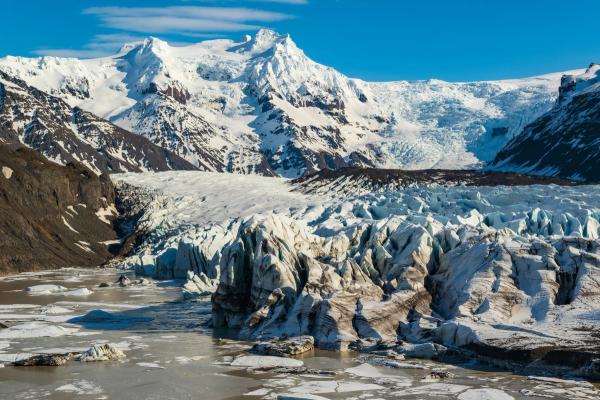
Eldgjá Canyon
For those intrigued by volcanic history, a trip to the Eldgjá Canyon is a must. Known as the "Fire Canyon," it’s the largest volcanic canyon in the world and part of the Katla Geopark. The dramatic landscapes here are perfect for hiking and photography, offering a glimpse into Iceland's fiery origins.
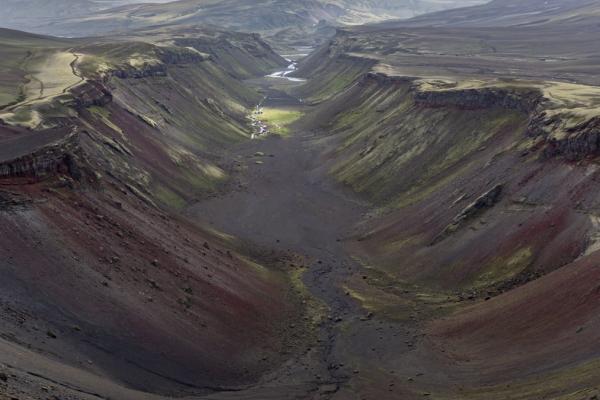
Ingólfshöfði Headland
Bird watchers will love Ingólfshöfði headland. Guided tours take you across the sand flats on a tractor-drawn hay cart, leading to prime spots for observing seabirds like puffins during their nesting season. It’s a unique bird-watching experience with knowledgeable guides sharing insights about the local wildlife.
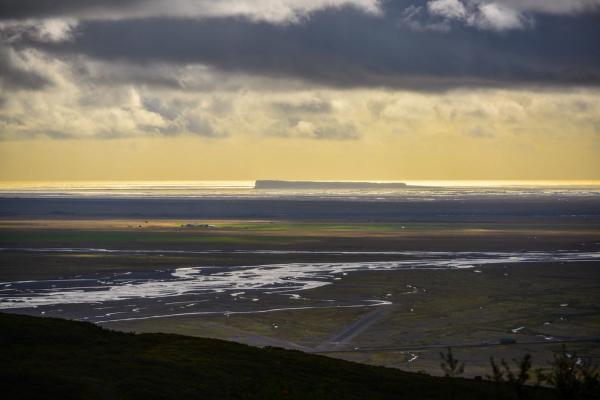
Fjallsárlón Glacier Lagoon
For a more peaceful experience, visit Fjallsárlón Glacier Lagoon. It’s similar to Jökulsárlón but less crowded, offering intimate boat tours that'll get you close to the glacier’s edge. It’s a serene and beautiful spot to observe the glacier's movements and the gentle drifting of icebergs.
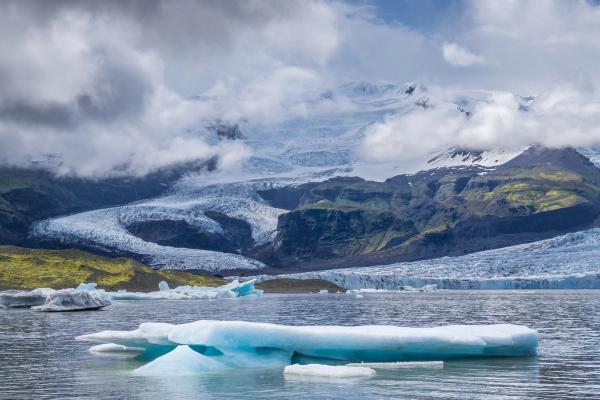
Behold the Tallest Waterfall
Visiting Morsárfoss is more than just seeing Iceland's tallest waterfall; it's an adventure that takes you through some of the country's most stunning natural landscapes. From the challenging yet rewarding hike to the mesmerizing sight of water cascading from a glacier, Morsárfoss offers a unique and unforgettable experience.

